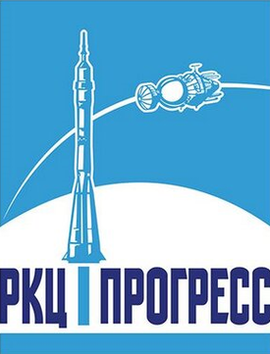Progress Rocket Space Centre
53°13′14.52″N 50°18′04.32″E / 53.2207000°N 50.3012000°E
 | |
Native name | Ракетно-космический центр «Прогресс» |
|---|---|
| Company type | Joint-stock company |
| Industry | Aerospace |
| Predecessor | TsSKB-Progress |
| Founded | April 12, 1996 |
| Headquarters | , Russia |
| Products | |
| Revenue | $593 million[1] (2017) |
| $26.5 million[1] (2017) | |
| $21.7 billion[1] (2017) | |
| Total assets | $1.69 billion[1] (2017) |
| Total equity | $488 million[1] (2017) |
Number of employees | 17,703 |
| Parent | Roskosmos[2] |
| Website | samspace |
Rocket and Space Centre "Progress" (Russian: Ракетно-космический центр «Прогресс») is a Russian joint-stock company under the jurisdiction of Roscosmos. It builds and operates the Soyuz family of rockets, the primary launch vehicle for the Russian space programme and derived from the R-7 missile.
The company is a direct descendent of the Soviet-era State Aviation Plant No. 1, established in 1941, which came to be known as "Progress" and the Central Specialized Design Bureau (TsSKB, Russian: Центральное специализированное конструкторское бюро) which was established in 1974 to continue to refine the design of the R-7. The two groups were merged on 12 April 1996 to form this company, initially called TsSKB-Progress (Russian: ЦСКБ-Прогресс).
Overview
editProgress Centre was the developer and manufacturer of the Soyuz FG series of launch vehicles that were used for human spaceflight launches, and the Soyuz-U series that were used for robotic spacecraft launches.[3][4] Commercial marketing of these launch vehicles was handled by the company Starsem. TsSKB-Progress' satellite products include the Foton and Foton-M science satellite series along with the Yantar military reconnaissance and the Resurs DK civilian observation satellites.[5]
The company's main production facilities are located in the city of Samara, Russia. They include a design bureau, a large R-7 factory called Progress and an affiliate design bureau KB Foton. Up to 25,000 people work in the Progress factory; of them, 5,000 work in rocket and satellite systems, and 360 work on the R-7 production line at any given time. After the dissolution of the Soviet Union, the factory has also diversified into machine tools, vodka and sweets.[5]
History
editIn 1941, the State Aviation Plant No.1 was moved from Moscow to the city now known as Samara, Russia, near the Volga River. The plant, named Dooks, had been created in 1917, using facilities in Moscow which had previously been used for the manufacture of bicycles, motorcycles, and various other vehicles. Before World War II, the plant had manufactured several aeroplane models at the Moscow location, including the Mikoyan-Gurevich MiG-3. During the war, the plant manufactured Ilyushin Il-2 and Ilyushin Il-10 aircraft. In 1946, it began production of Mikoyan-Gurevich MiG-9 and Mikoyan-Gurevich MiG-15 jet fighters, and in 1954, it started to produce Tupolev Tu-16 bombers.
On 2 January 1958, the Soviet Union government ordered State Aviation Plant No.1 to begin production of R-7 Semyorka rockets.
The Central Specialized Design Bureau (TsSKB) was established on 30 June 1974. Dmitri Kozlov,[6] who had been the chief designer of the R-7 and a Deputy Chief Designer of ОКB-1, was appointed General Designer of TsSKB on 6 July 1983.
On 12 April 1996, two Russian aerospace organizations, the Central Specialized Design Bureau (Russian: Центральное специализированное конструкторское бюро), TsSKB, and the Samara Progress plant were merged to form TsSKB-Progress.[7]
In 2003, A.N. Kirilin was appointed as General Director of "TsSKB-Progress", and D.I. Kozlov became its Honorary General Designer.
Rockets and missiles
editSatellites
edit- Resurs
- Pion-NKS
- Lotos
See also
editReferences
edit- ^ a b c d e "Balance Sheet" (PDF). Progress State Research and Production Rocket Space Center. 31 December 2017.
- ^ "О мерах по созданию Государственной корпорации по космической деятельности "Роскосмос"". Официальный интернет-портал правовой информации. Retrieved 15 April 2017.
- ^ "Soyuz-FG". Roscosmos. Archived from the original on 27 September 2007.
- ^ "Soyuz-U". Roscosmos. Archived from the original on 27 September 2007.
- ^ a b Harvey, Brian (2007). The Rebirth of the Russian Space Program: 50 Years After Sputnik, New Frontiers. Springer. p. 277. ISBN 978-0-387-71354-0.
- ^ "Скончался бывший генконструктор "ЦСКБ-Прогресс" Дмитрий Козлов". Gazeta.ru. 7 March 2009. Retrieved 1 April 2009.
- ^ "History - Samara Space Centre". Samara Space Centre. Archived from the original on 27 September 2007.